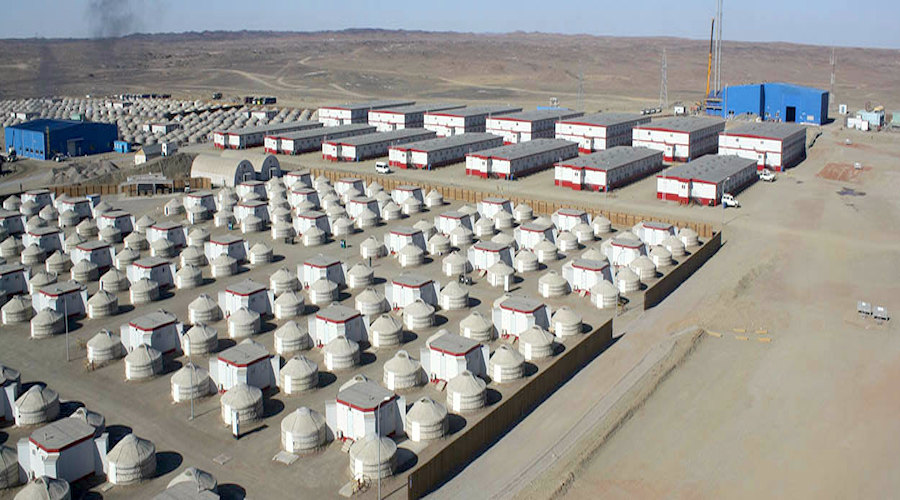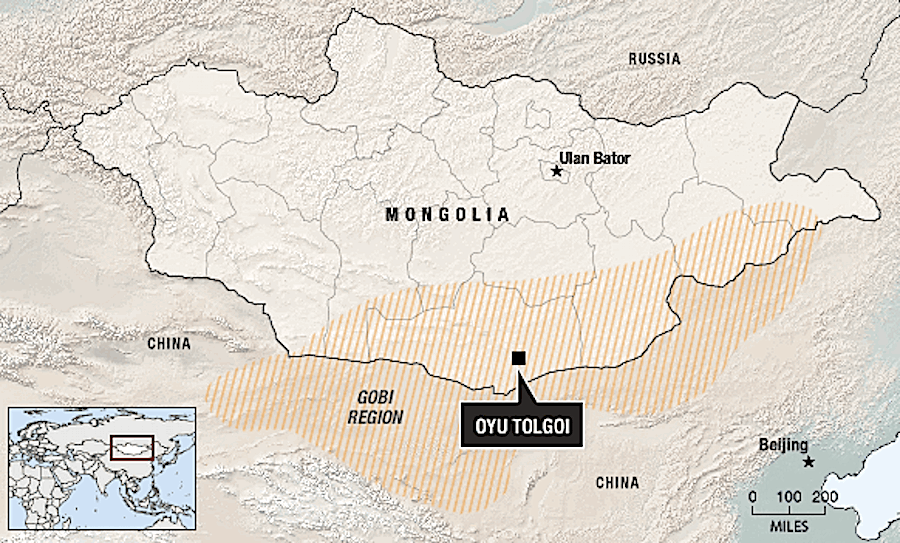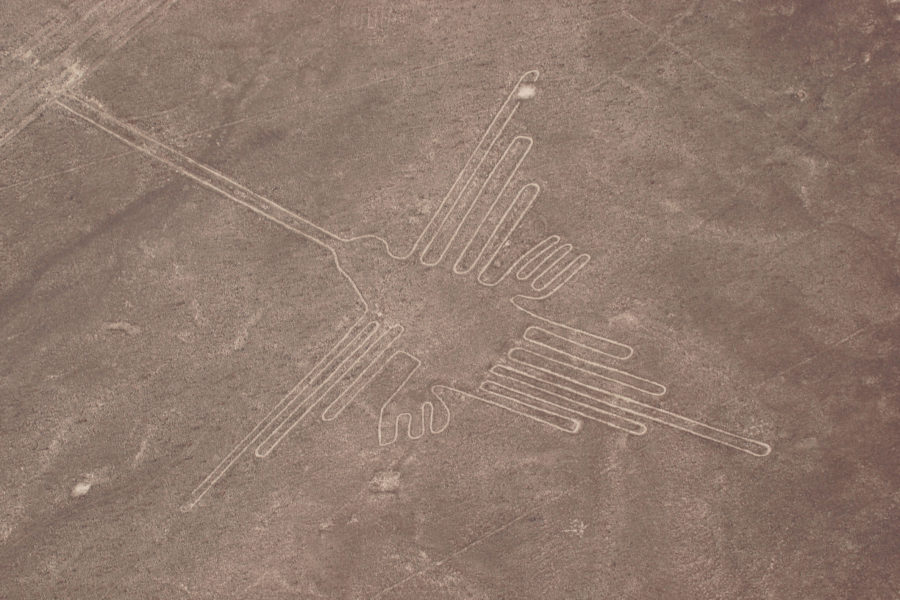Mongolia asks Rio Tinto to mutually cancel Oyu Tolgoi deal

Mongolia’s government is said to be actively seeking to cancel a deal with Rio Tinto (ASX, LON, NYSE: RIO) governing a $6.75 billion expansion of the Oyu Tolgoi copper mine in the Gobi Desert, as it looks to replace it with a new agreement.
Rather than acting unilaterally, which would risk future foreign investment projects, local authorities have suggested Rio Tinto mutually terminate the plan. The end goal, Financial Times reports, is to reach a new agreement more beneficial to Mongolia.
Ulaanbaatar threatened in early January to halt construction at the mine, arguing that delays and higher-than-expected costs had eroded the economic benefits the country had hoped for.
Rio had in 2019 flagged stability risks associated with the original project design, which translated into as much as an additional $1.9 billion cost and a 30-month delay.
Mongolia threatened in January to halt construction at the mine expansion, arguing that delays and costs had eroded the economic benefits the country had hoped for
The miner confirmed in December the new estimate for the long-awaited underground expansion, adding that production would begin in October 2022.
Erdenes Oyu Tolgoi LLC, the Mongolian state-owned company that owns a third of the mine, reacted to the new timeline and budget by saying that Rio had not delivered on its 2015 promises.
Erdenes’ interest in Oyu Tolgoi is technically held through a 34% in a Mongolian company called Oyu Tolgoi LLC. The remaining stake belongs to Canada’s Turquoise Hill Resources (TSX, NYSE: TRQ), which is 50.79% owned by Rio Tinto.
The best scenario for everyone involved in the mine development, which will make Oyu Tolgoi the world’s fourth-largest copper operation once completed, is uncertain.
The Mongolian Parliamentary Working Group, formed in 2019, recommended exploring possibilities for a production sharing agreement and/or replacement of the equity interest with a special royalty.
Multiple issues
Rio and Turquoise Hill are focused on bringing the underground expansion into production, but they have locked horns on the financing aspects. The Canadian miner scored a temporary, but key victory last week, after an arbitration tribunal handling the spat granted the Canadian miner interim relief.
The ruling prevents the mining giant from restricting Turquoise Hill’s talks on funding and other matters with its fellow stakeholders in Oyu Tolgoi.
The miners also have other issues to resolve, including extending an existing power agreement beyond March. The operation is powered by coal-fired electricity imported from neighbouring China via overhead cables.
NOW READ: Stakes high for Rio Tinto, Mongolia as Oyu Tolgoi talks loom
Then there is a potential restructuring of Oyu Tolgoi’s management team, as well as the need to ratify a 2019 statement of resources and reserves and a feasibility study prepared in 2020.
All these topics need to be addressed before Rio Tinto makes a major mining decision — an undercut — in May.
The technique is part of an extraction method known as block caving. It involves creating an artificial cavern below the ore body, allowing it to progressively collapse under its own weight.

Rio Tinto’s decision will also be affected by the view of its brand-new boss, Jakob Stausholm, who only two weeks ago overhauled the senior leadership team and created two new roles.
Two sources familiar with the matter told MINING.COM last week the company is open to negotiating a new deal with Mongolia to solve impasse over the multibillion-dollar project.
The mining giant has repeatedly said the underground expansion is its most important growth project. Once completed, Oyu Tolgoi will churn out 480,000 tonnes of copper a year from 2028 to 2036.
{{ commodity.name }}
{{ post.title }}
{{ post.date }}

3 Comments
BCI
Very very old picture – not reflective of the current condition.
Dar
@BCI
Is the situation better or worse nowadays?
Rustem
Recommendations for technical measures to address the problems encountered at the Oyu-Tolgoi field. (this is not an advertisement).
The problem that arose at the Oyu-Tolgoi field is primarily of a technological nature – it is the impossibility of working out two anticlinal folds due to the risk of a geomechanical catastrophe, which entailed:
– large losses of explored balance reserves of minerals;
– making changes to the project for the development of the deposit;
– investments of large financial resources for underground mining of the deposit, at the present time; and etc.
Ultimately, this led to financial losses for the co-owners of the Oyu-Tolgoi field, which were very different from the originally concluded agreement. Further underground mining of the deposit using a block caving is also associated with large losses and dilution of minerals, reaching up to 50% or more. And at the same time, the stability of the already formed worked-out spaces of the quarry field and the newly formed underground workings is not guaranteed.
A group of authors has developed a method for predicting and preventing geomechanical disasters in the worked-out spaces of open-pit and mine fields. Application of the method will allow solving the technological problems that have arisen at the Oyu-tolgoi field. That is, to ensure the safe mining of two dangerous sources of collapse – anticlinal folds, and possible other dangerous centers of collapse, to increase the slope angles of the sides of the open pit, etc. which will allow the Oyu-Tolgoi deposit to be worked out to the maximum depth in an open pit, with minimal losses of minerals.
The list of recommended technical measures to improve the safety of mining operations and ensure the maximum possible completeness of extraction of minerals, when developing a deposit by an open pit, provides:
1. Development of geometrical graphs with indications on plans, vertical cross-sections and longitudinal sections of the mineral (ore) and accommodating rocks, predicted configurations and spatial dislocations of hazardous foci, dangerous from the point of view of spontaneous (spontaneous) destruction of minerals (ore) and accommodating rocks, foci of a quarry field, when developing deposits according to a standard design.
2. Development of geometrical diagrams of plans, vertical cross-sections and longitudinal sections with instructions for technical measures to prevent spontaneous (spontaneous) destruction of lithological differences in minerals and accommodating rocks in hazardous foci of a quarry field, including:
2.1. Development of opening schemes and development systems, with the determination of the axis of lowering and and directions of development of the front of mining operations, as well as technical measures that allow the prevention of homogeneous geomechanical disasters;
2.2. Development of stable angles of slopes of ledge and horizontal platforms of ledge, adoption of optimal heights of ledge, the combination of which will allow the construction of stable intermediate and final working and non-working angles of slopes of the pit walls, with the replenishment and involvement of previously admitted design and operational losses of minerals in the extraction.
2.3. Development of mineral deposits by deep quarries.
2.4. Development of a special project for the production of works on safe mining and elimination of two anticlinal folds by an open method.
2.5. When constructing a grid of the slip for the Oyu-Tolgoi field, the authors will determine not only the contours of the above two anticlinal folds, but also other potentially dangerous sources of collapse throughout the open pit field. In the event that a dangerous center of collapse is left in the side of the open pit field, in order to prevent their collapse, the authors will develop technical measures for their safe development and subsequent elimination.
As a result, the technologies performed by the authors will allow:
– to ensure high safety of open-pit and underground mining operations, with provision for forecasting and prevention of homogeneous geomechanical disasters;
– more complete development of the deposit, with a decrease in total losses to values up to – (25-15)% by open-pit mining, and by underground method to (10-15)%, of the total explored balance reserves of minerals, by combined field development;
– to mine of open method to (75-85)% of the – proven balance reserves of minerals of the deposit, while the advantage is that the productivity of open-pit mining is 10-20 times higher than the productivity of underground mining, which will allow, in a short time, receive significant profits from the sale of minerals;
– grid of the sliding developed by the authors for the Oyu-Tolgoi field will allow the selection of the most optimal option development out of the many possible ones obtained by the authors’ technology. With the investment of minimum costs, even taking into account the reconstruction of the pit slope sides, the elimination of two dangerous centers of collapse (anticlinal folding ), etc., as well as without a significant decrease in the production capacity of the mine;
– an increase in the completeness of excavation – an additional replenished volume of minerals obtained as a result of the introduction of the authors’ technology will increase the volume of proceeds from the sale of this replenished volume of minerals. This, in turn, will make it possible to cover the non-productive costs (preliminary) associated with the elimination of two dangerous centers of collapse (anticlinal folding), etc. It will also allow maintaining the interest packages of the co-owners of the Oyu-Tolgoi deposit, without making significant financial contributions at this stage.
At the second stage, during the development of the Oyu-Tolgoi deposit by the underground method, the mine field to be excavated will be zoned according to the degree of strength (stability). With the choice of the most optimal development systems, the sequence of excavation of geological-structural blocks, directions of mining development, etc., as a result, homogeneous geomechanical disasters in the mined-out spaces of mine fields will be excluded. And also the design and operational losses of minerals will be reduced in the amount of 50%, in comparison with the existing ones, during the development of deposits according to standard technical projects.
The use of the authors’ technology, which provides for a combined open-pit and underground mining system, as well as the use of open-pit transport communications in underground mining, technologies to reduce the cost of breaking out ores and rocks, and reduce the loss of minerals, will dramatically reduce the cost of mining by the underground method.And in this case, there will be no need to carry out at this stage, underground mining and therefore there is no need for an urgent investment of 6.75 billion rubles. dollars, and also the values of losses of minerals will be reduced.